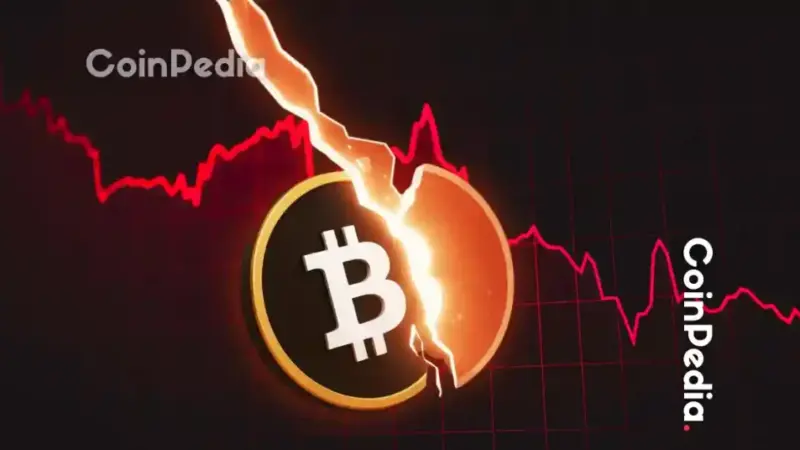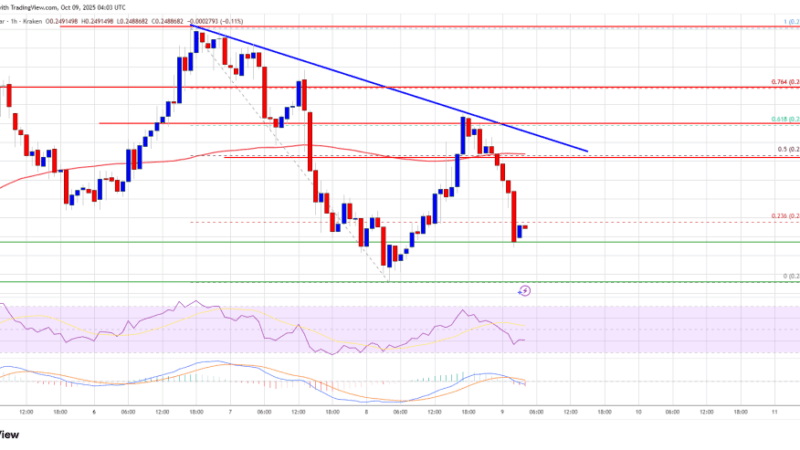From index to inflows: how S&P’s ‘Digital 50’ could reshape XRP access
S&P Global announced plans to launch the S&P Digital Markets 50 Index, a benchmark that combines 15 crypto with 35 publicly traded crypto-linked equities, and a potential inclusion of XRP might reshape its structure.
S&P Dow Jones Indices developed the index in collaboration with Dinari, which will issue a token tracking the benchmark on its dShares platform, according to an Oct. 7 announcement.
The equity portion includes companies involved in digital asset operations, infrastructure, financial services, and blockchain applications, while the crypto portion draws from S&P’s existing Broad Digital Market family.
Initial methodology details reported by Barron’s indicated the index will cap individual constituents at 5% and apply minimum market cap thresholds of about $100 million for equities and $300 million for crypto.
XRP inclusion odds tied to market cap and ETF timeline
While constituent selection remains uncertain, XRP’s position as the fifth-largest crypto by market cap and signals around pending spot ETF approvals create a case for inclusion.
The regulatory backdrop shifted on Sept. 17, when the SEC approved generic listing standards for crypto-related ETFs across major exchanges.
Bloomberg senior ETF analyst Eric Balchunas noted on Sept. 29 that approvals for altcoin ETFs are not a matter of “if,” but “when.”
Signals suggest that once the US government shutdown ends, a wave of altcoin ETF approvals will follow, with XRP among the likely candidates.
That timing aligns with the index launch and could strengthen XRP’s inclusion case.
Index effects could reshape XRP supply conditions
Research on index additions reveals clear patterns around forced buying and liquidity shifts. Classic studies on S&P 500 changes found announcement-day price jumps for additions, heavy volume into the effective date, and not much long-run outperformance afterward.
An often-occurring event is asymmetric effects, where additions rise and deletions do not fall as much, aligning with forced buying by index trackers and greater investor awareness, rather than fundamental changes.
That forced demand creates a recurring “index premium” and trading cost borne by index funds during rebalances.
However, more recent evidence presented in a 2023 Harvard study suggests that the S&P 500 effect has faded as markets have become more efficient and changes are more anticipated. The average abnormal returns around S&P 500 additions and deletions have moved close to zero over the past decade.
Outside the S&P 500, similar but often stronger patterns appear around global indices. Studies of MSCI reconstitutions reveal significant positive abnormal returns on announcement days, with some reversal after the index goes live, indicating temporary price pressure from mechanical flows.
Tesla’s December 2020 entry into the S&P 500 triggered tens of billions of dollars in index buying, accompanied by outsized volume and price swings up to the effective date. Subsequent analysis estimated meaningful implementation costs for indexers from that single rebalance.
Nevertheless, the microstructure reliably changes after an index inclusion. Liquidity improves and bid-ask spreads compress as passive ownership increases, although the excess returns following the event are mixed and often revert once the buying is complete.
The consensus is that any edge sits in the short window between announcement and inclusion, and even that has diminished for the S&P 500 relative to earlier decades.
For XRP, inclusion in the S&P Digital Markets 50 could trigger similar mechanics. Index trackers and tokenized products tied to the benchmark would need to acquire XRP positions ahead of the effective date, creating temporary buying pressure.
The 5% constituent cap and quarterly rebalancing would establish recurring demand as the index adjusts weights.
Beyond price effects, inclusion would enhance XRP’s appeal to both retail and institutional investors by associating the asset with a rules-based S&P benchmark, potentially expanding its investor base and improving market depth over time.
The post From index to inflows: how S&P’s ‘Digital 50’ could reshape XRP access appeared first on CryptoSlate.



